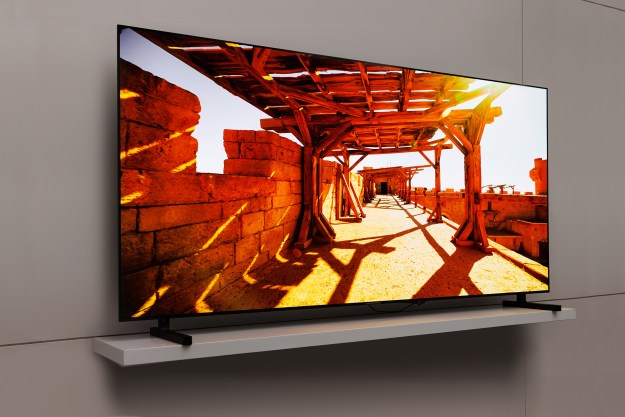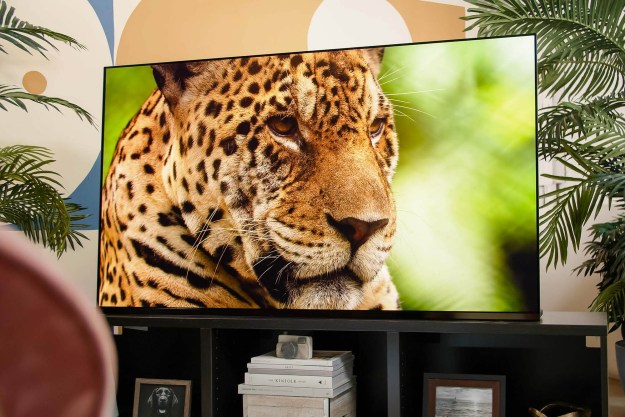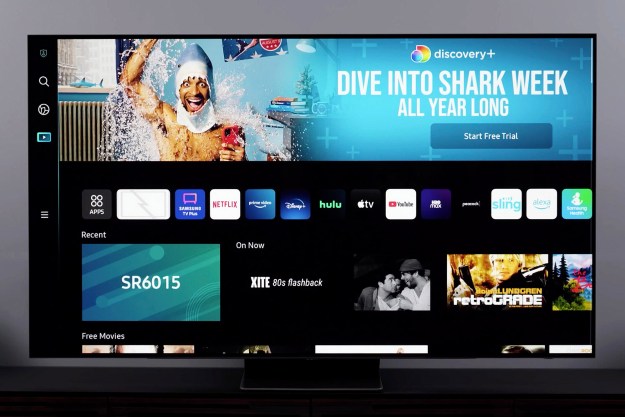
- High overall brightness
- Excellent color brightness
- Superior contrast
- Perfect blacks/uniformity
- Great for gaming
- First-gen technology
- Size limits
There’s a good chance you’ve already heard plenty about the Samsung S95B OLED TV — much of it wildly positive, some of it wildly confusing. I’m here to throw some more weight behind the former and clarify the latter.
Here’s the short version of this review: The Samsung S95B OLED TV is an excellent TV and a marvel of engineering. Should you choose to buy it, I think you’ll love it for many years to come. However, you should also know that the S95B is built on first-generation display technology, and even though the foundation of that technology is well proven, there will always be a risk involved in buying a first-of-its-kind product. As risky tech purchases go, however, the Samsung S95B OLED TV ranks fairly low.
Now, let me tell you why I love this TV and why I think you should buy it.
Video review
Samsung calls it OLED. It’s QD-OLED
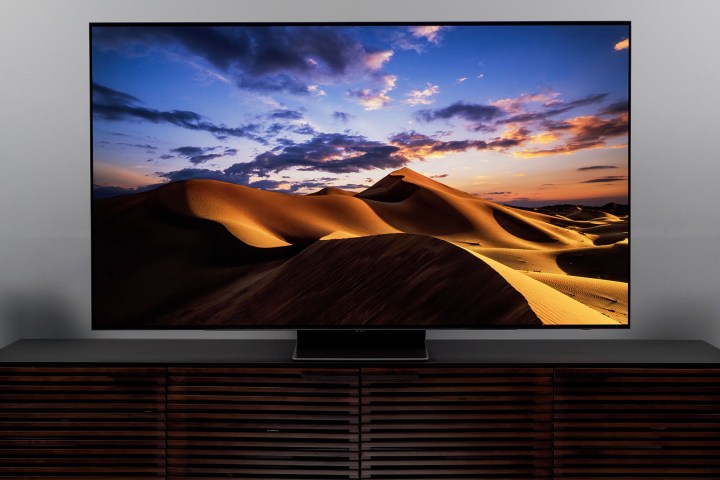
After years of shunning (read: flagrantly disparaging) the OLED display technology pioneered and monopolized by rival South Korean manufacturer LG, Samsung Electronics finally has an OLED TV. I imagine the reason Samsung can do that without necessarily eating a giant slice of humble pie is that while the S95B is marketed as an OLED TV, it’s actually built on a newer, let’s call it “OLED-adjacent,” technology called QD-OLED. That is, there are OLED pixels involved, but there are also quantum dots (QD) involved — importantly, the whole thing is built much differently than LG’s version of an OLED TV.
About one thing, there is no question: The S95B is a revolutionary TV
This distinction is important because, despite having a familiar name, Samsung’s S95B OLED TV performs very differently than just about any other TV on the market — Sony’s A95K QD-OLED TV (which uses a Samsung panel) notwithstanding. It’s in that difference we find some benefits and a few lingering questions. About one thing, there is no question: The S95B is a revolutionary TV.
If you feel like digging deeper into the nuts and bolts of how this TV makes a picture, you can learn more about QD-OLED here, but the takeaway is that QD-OLED is inherently brighter and, potentially, less susceptible to burn-in than OLED TVs that use LG’s WRGB OLED panels. The panel technology alone holds a lot of promises and, as I’ve experienced, convincingly delivers on almost all of them.
Samsung S95B OLED TV details
While we reviewed the 65-inch model, our review also applies to the 55-inch model.
| 55-inch | QN55S95BAFXZA | $2,199 |
| 65-inch | QN65S95BAFXZA | $2,799 |
Design

Aside from its technical merits, the Samsung S95B is a very attractively designed TV — if a bit flimsy in some areas. The TV’s stand is slim and attractive, yet robust and functional. The front of the TV has almost no front borders to speak of, while the rear of the TV is made of sturdy polycarbonate. The overall profile is very slim and attractive. However, the top edge of the TV is just malleable enough that it could bend a bit in shipping. I’ve seen it happen a few times myself, though thankfully the unit I purchased for this review arrived in perfect shape.
Another design point worth talking about is Samsung’s new rechargeable remote control. Sure, you can recharge the remote using a USB-C cable, but you probably won’t need to because it can also get its juice from solar panels lining the back of the remote and from the invisible radio waves circulating around your home. This kind of hands-off power maintenance is just the kind of thing I’d like to see other TV brands pick up.
User interface

While I’m a fan of Samsung’s new remote design, I’m less enthusiastic about recent changes to the Tizen smart TV operating system that the remote controls. On the positive side of things: Tizen supports just about any app you could possibly want to use, and the apps themselves are of high quality. The system also lets you choose your voice assistant, be it Amazon’s Alexa, Google Assistant, or Samsung’s own Bixby.
On the whole, though, I’ve found this new version of Tizen to be a bit more sluggish — I often find myself waiting for the system to react to my clicks. I also think it takes too many clicks to find and select the input I want. Also — and I admit this may be a bigger problem for me than most users — I felt like it took too many clicks to get through to the TV’s various settings. I’m of the opinion that a TV’s built-in smart TV system should stay out of the way of my enjoying content on the TV, but I spent much more time than I’d like navigating the TV’s various screens and menus.
Tech spec highlights
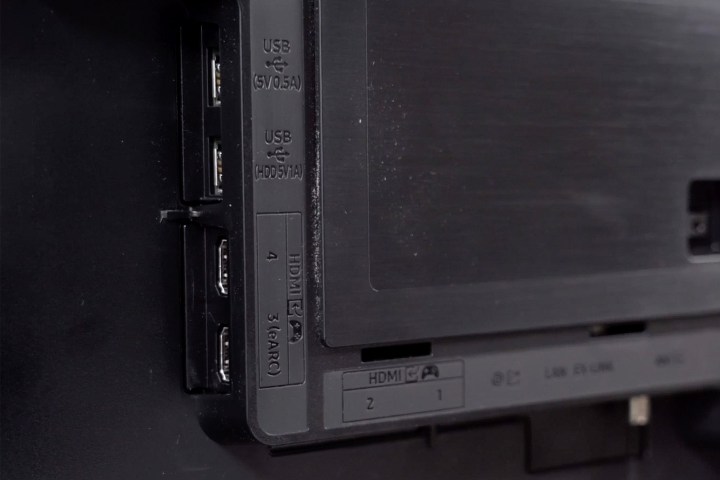
The Samsung S95B is one of the most advanced TVs you can buy, and not just because it uses the newly designed QD-OLED panel.
The S95B provides four full-bandwidth HDMI 2.1 ports, one of which is an eARC port. The chief benefit of those advanced HDMI ports is for those looking to connect a next-gen game console like an Xbox Series X or PlayStation 5 or, for hard-core gaming enthusiasts, a high-end PC armed with an advanced graphics card. Console and PC gamers can expect low input lag with support for variable refresh rate (VRR) up to 120Hz at 4K resolution.

With that said, no console or PC is needed to enjoy playing top game titles on the S95B, thanks to the recently launched Samsung Gaming Hub, which supports game streaming services like Xbox Cloud Gaming, Google Stadia, and Utomik, among others. Using these services, it’s possible to play AAA game titles with nothing more than the S95B TV and a compatible wireless controller.
For HDR video, the S95B supports HDR10, HDR10+, and HLG but, like all Samsung TVs, does not support Dolby Vision. The TV does support Dolby Atmos sound, however, and in fact, can pass Dolby Atmos sound via a wireless connection to certain Samsung soundbars. In addition to this clever wireless audio trick, the S95B supports Samsung’s Q-Symphony sound, which enables the TV’s built-in speakers to work in concert with a Samsung soundbar. In our tests, we’ve found that Q-Symphony sound helped to improve dialog clarity and, in some cases, enhance the Dolby Atmos surround experience by increasing the perceived height of sound objects.
Picture quality
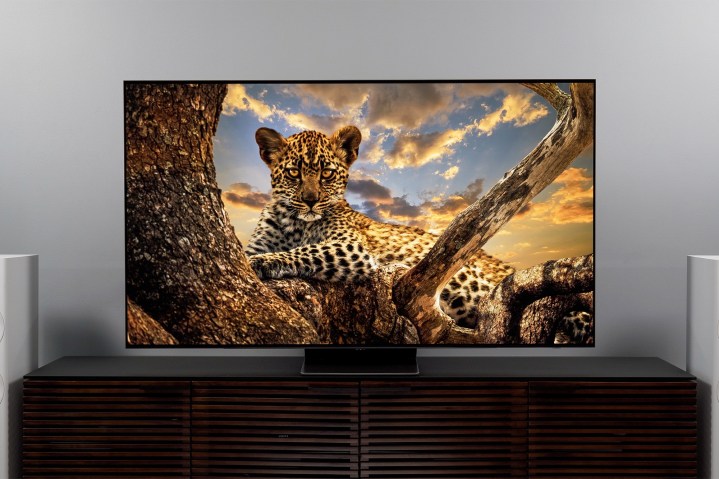
It’s the color brightness that really sets this TV apart.
In a nutshell: The Samsung S95B’s picture quality is excellent and, in some ways, can only be rivaled by Sony’s much more expensive A95K QD-OLED TV, making it a uniquely attractive option for enthusiasts who want the best. The only downside is that it’s only available in 55- and 65-inch options.
One of the key takeaways here is that the S95B can get brighter than nearly any other OLED TV on the market. And not just pure white brightness, which can tip the meter at nearly 1200 nits in HDR or around 500 nits in SDR — both very impressive numbers — actually, it’s the color brightness that really sets this TV apart.
Because the QD-OLED technology in the S95B doesn’t use a white subpixel like most competing OLED TVs, it is able to produce colors with higher brightness than competing OLED TVs, and it is that color brightness that really grabs you when you watch this TV. Just as I experienced with the Sony A95K a few months ago, the color produced by QD-OLED is remarkably vivid and enjoyable. Red and yellow colors, especially, are unlike anything I’ve seen on a TV before.
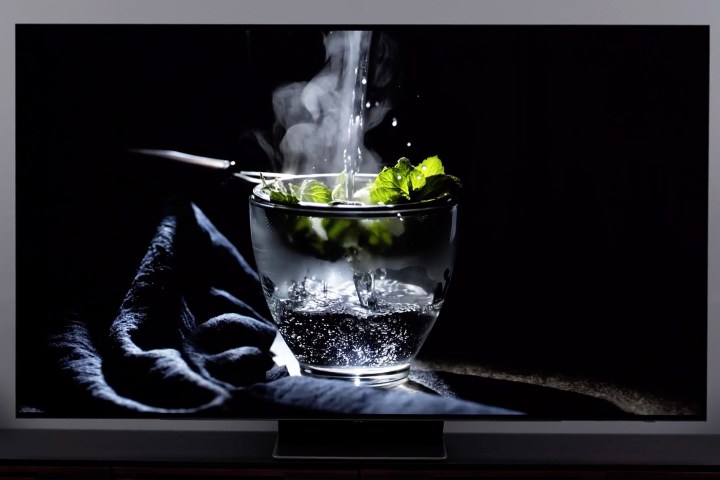
The TV’s brightness is equally matched by its ability to produce pure blacks which, as I’ve previously reported, is the reason why OLED-based TVs have better contrast than LED/LCD TVs, even though they don’t get as bright as LED/LCD TVs,
From 4K Blu-rays to 4K streams on Netflix, Disney +, and HBO Max, in SDR or HDR, the S95B looks terrific. One of the areas in which I’d like to see some improvement, however, is in the handling of low-bit depth content.
It may not be perfect, but it is damn close.
When you stream a YouTube video, for example, that doesn’t have as much color information in the stream, the S95B doesn’t do as strong a job cleaning up that picture as many competing TVs do. I’m not sure why that is because, generally, premium Samsung TVs do well in this area. This could be a slight annoyance for some folks watching SDR content on cable or satellite, not because the image looks especially poor on its own merit, but when you jump from a high-quality Disney + or Netflix Stream or Blu-ray disc down to cable or satellite content, the difference in picture quality can be jolting.
I was simply dazzled by how striking the S95B looks
The other picture quality element I like to hone in on is motion. OLED technology offers nearly instantaneous pixel response time, which inherently comes with some advantages and disadvantages. On the positive side, it isn’t prone to smearing or blurring like LCD-based TVs are. On the negative side, that instantaneous pixel response time and lack of natural blurring can cause a sort of stuttering/almost flashing effect when you have slow panning wide shots, primarily in movies, but also seen in some games and TV shows. This effect can be mitigated somewhat by turning up the S95B’s motion smoothing settings, but care must be taken not to overdo it and bring on the soap-opera effect.
With that said, at NO time was I ever distracted by motion performance while watching this TV. I was simply dazzled by how striking the S95B looks. It may not be perfect, but it is damn close.
Sound quality
Given how thin the S95B is, I was expecting to be let down by its onboard sound, but I wound up being pleasantly surprised. The S95B offers a robust, full sound with plenty of dialog clarity and a surprising amount of bass given action sequences and unexpected punch. I’d still advise getting a soundbar, but know that the S95B’s onboard sound is far better than the overwhelming majority of TVs produced today.
Caveats?
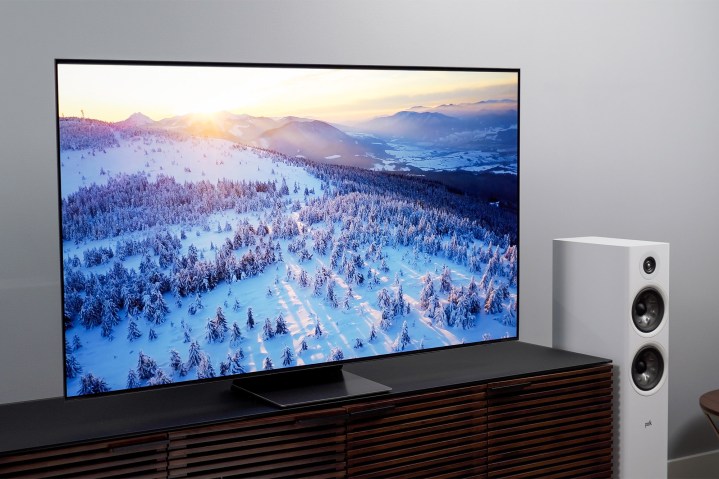
Given the S95B is built on first-generation technology, I understand why some might be reluctant to buy it, but given that the TV is built on two long-standing technologies — OLED and quantum dots — which are simply fused together in a new way, I see no reasons to doubt the TV’s longevity.
I also want to acknowledge that there’s some uncertainty around the S95B’s brightness potential given recent firmware updates issued by Samsung. Apparently, a recent firmware update issued by Samsung reduces the potential brightness of the TV when set to the “Movie” picture preset. This was not the case during my evaluation and I’ve not yet been able to test the TV since the allegations were issued. This review will be updated once we’ve learned more and had a chance to re-test the S95B OLED TV.
The same goes for how the S95B handles tone mapping for HDR video games. Presently, it seems its tone mapping can not be defeated, which can make the HDR calibration feature built into the Xbox Series X and PlayStation 5 a bit difficult to get dialed in properly — it’s easy to wind up with a washed-out picture if care is not taken.
Our take
The Samsung S95B OLED is a marvelous TV that helps bridge the gap between the enhanced brightest afforded by LED/LCD TVs and the perfect blacks and higher contrast made possible by OLED TVs. For nearly all uses, it is simply spectacular.
Is there a better alternative?
For those who need an extremely bright TV, a top-tier QLED TV may be more suitable. For those who prefer OLED, however, the S95B is one of the best deals available. The only competing QD-OLED TV on the market is the Sony A95K, and while the Sony set has some picture processing advantages, it is also much more expensive. For most folks, the S95B will simply make better sense.
How long will it last?
Though QD-OLED technology is in its first iteration, signs point to the S95B being a safe investment for long-term enjoyment.
Should you buy it?
Yes. If the sizes available (55- and 65-inch) suit you and you want some of the best picture quality available, the S95B is sure to thrill.
Warranty
Samsung offers a one-year manufacturer’s warranty on the S95B. For those concerned about burn-in risk, consider that Dell offers a 5-year warranty on its 34-inch curved QD-OLED monitor (AW3423DW) which uses the exact same panel technology. In other words: Burn-in, while possible, is unlikely.
Editors' Recommendations
- Best Samsung TV deals: Save on 4K TVs, QLED TVs, OLED TVs, 8K TVs
- Samsung unveils pricing and preorder details for its 2024 OLED TVs
- This Samsung S90C OLED TV news is literally huge
- Samsung S95C OLED hands-on review: it’s time to get excited
- Samsung accidentally reveals price of its 77-inch QD-OLED TV




